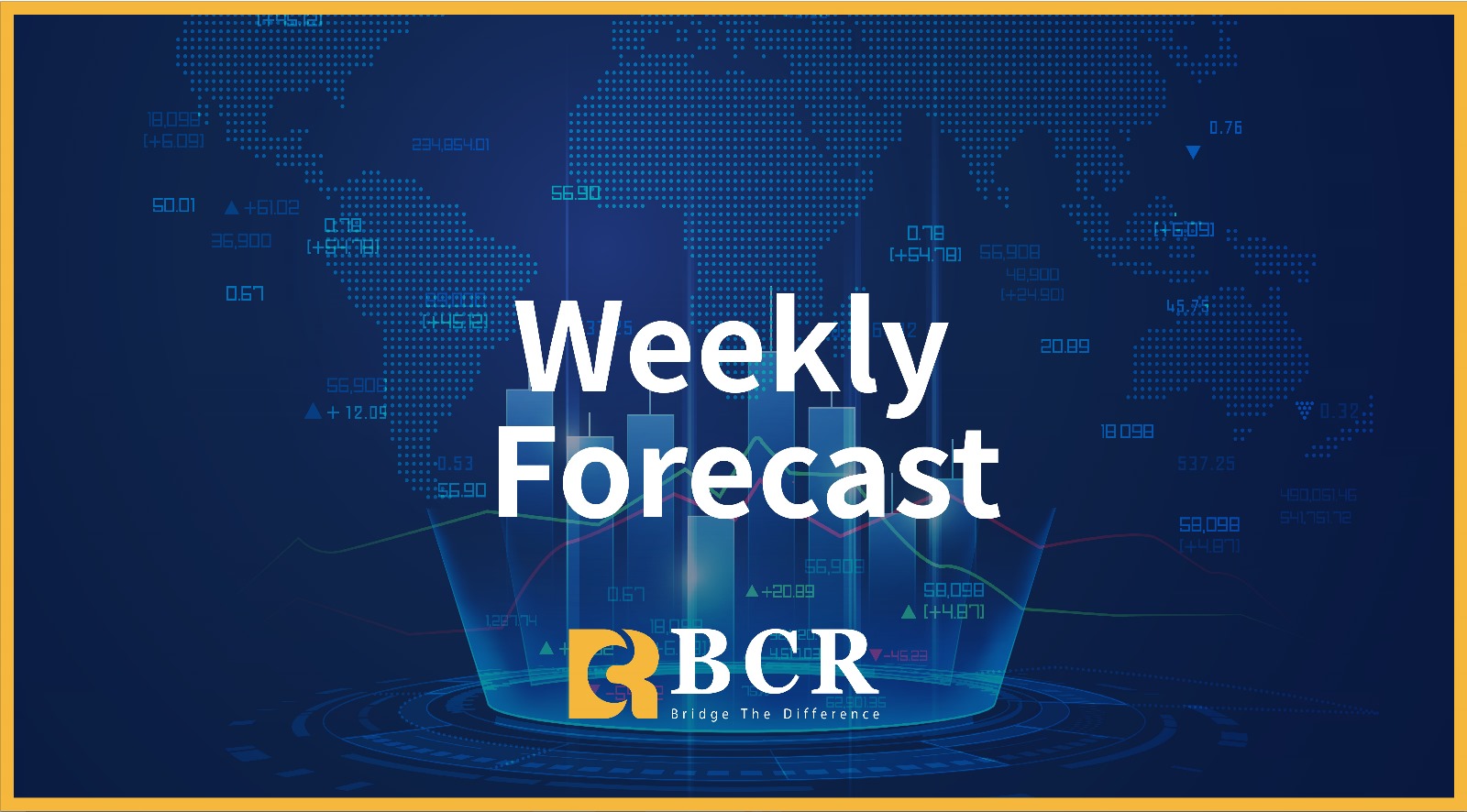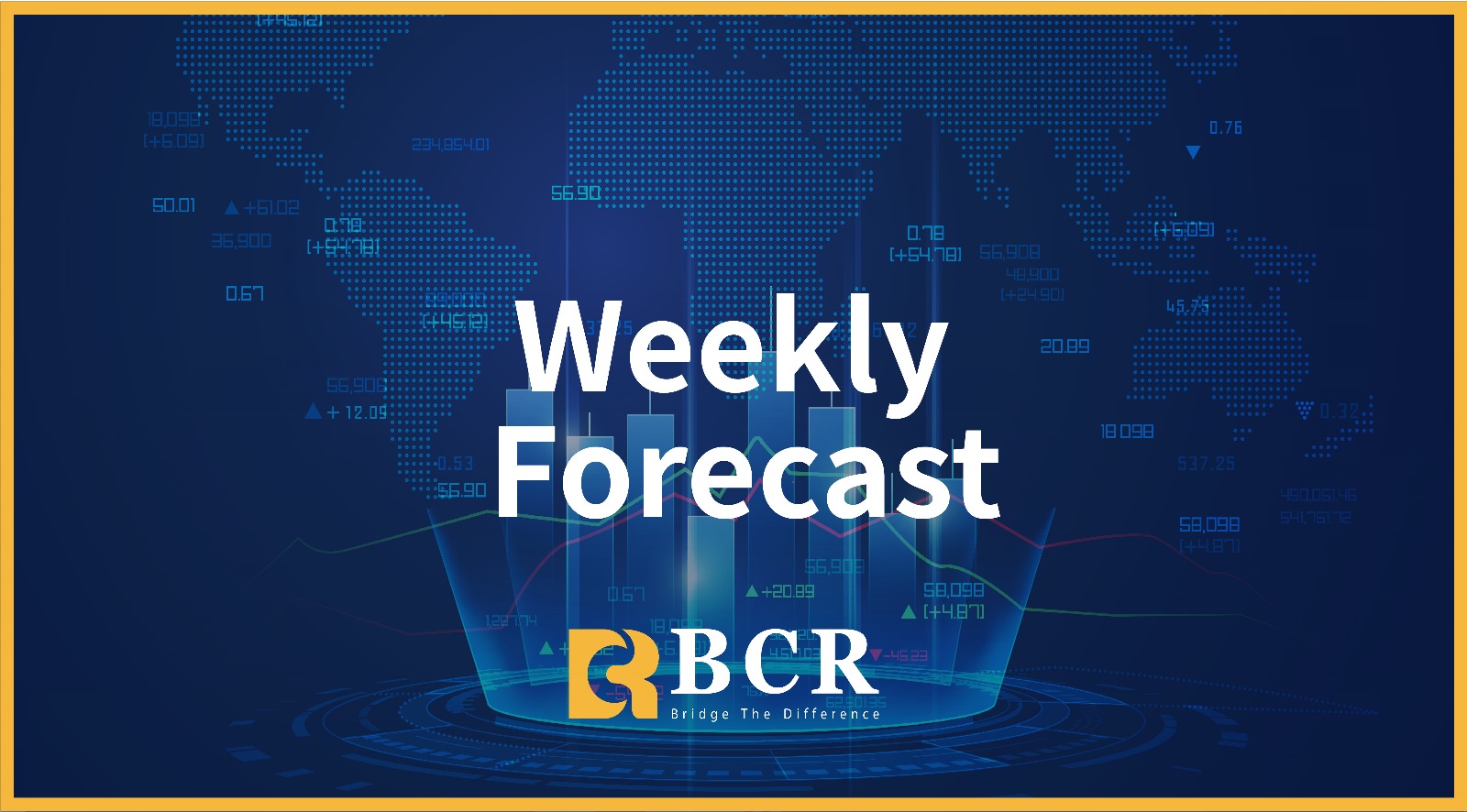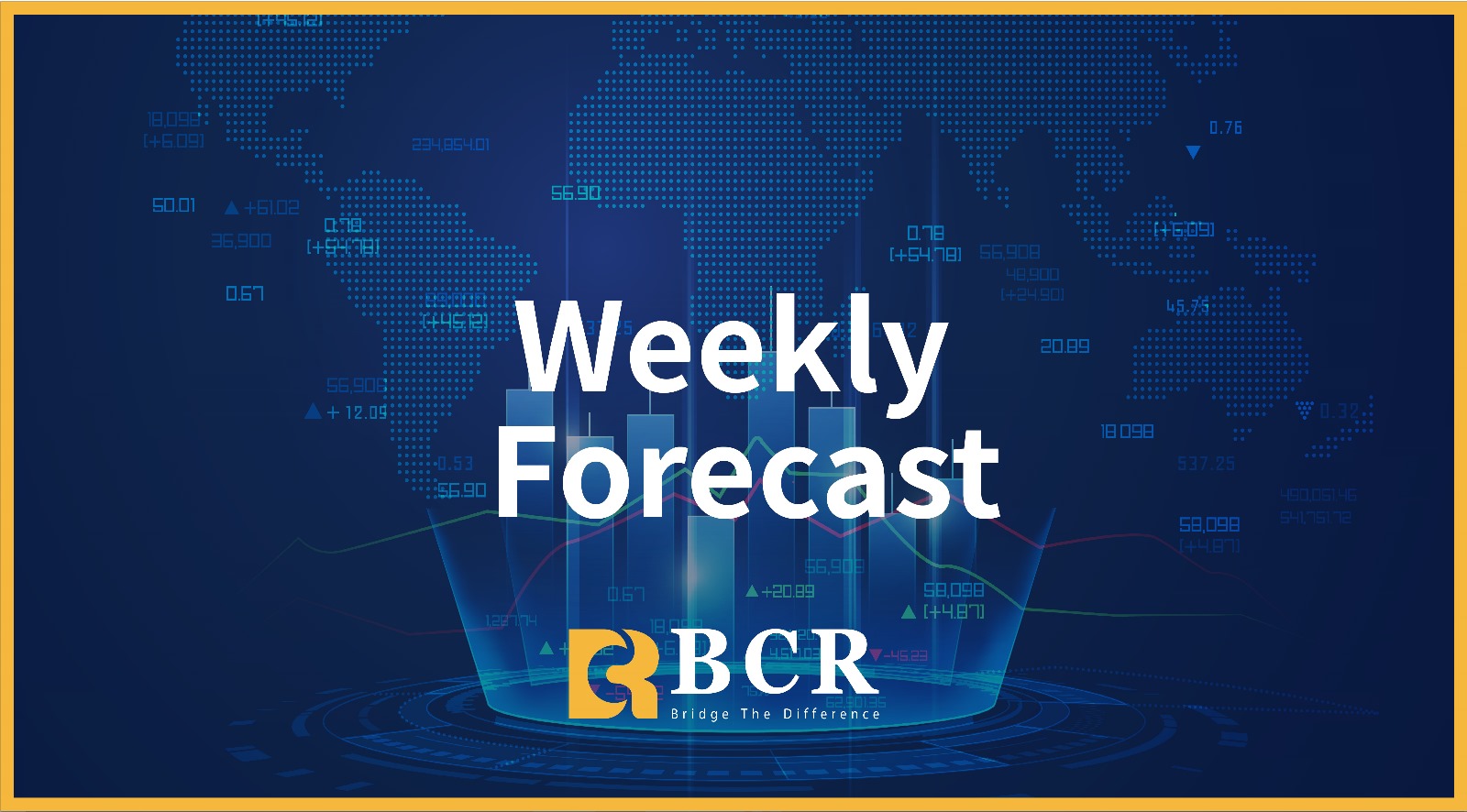





0
Before the weekend, Federal Reserve Chairman Powell's speech at the Jackson Hole symposium dominated market attention last week. Powell's unexpectedly dovish remarks reinforced hopes for a September rate cut. As a result, the US dollar index plummeted on Friday, reversing its gains from the first four trading days of the week. Furthermore, Friday's surge sent gold prices soaring nearly $36 per share for the week.
Separately, Putin met with US President Trump in Alaska for the first US-Russia summit in four years. The nearly three-hour closed-door meeting was devoted almost entirely to discussing a compromise solution for Ukraine. Standing side by side with Trump after the meeting, Putin expressed hope that the meeting would pave the way for peace in Ukraine, but neither Putin nor Trump disclosed the specifics of their discussions.
Last week, Canada announced the cancellation of several retaliatory tariffs imposed on the United States, marking a significant step in bilateral relations. The announcement followed a phone call between Carney and US President Trump, their first since the breakdown of tariff negotiations on August 1st. Carney's office described the conversation as "constructive and wide-ranging," and agreed to meet again soon.
Last Week's Market Performance Review:
U.S. stocks rallied sharply on Friday, with the Dow Jones Industrial Average hitting a record high after Federal Reserve Chairman Jerome Powell hinted the central bank could begin easing monetary policy as early as next month. The Dow Jones Industrial Average closed up 846.24 points, or 1.88%, at 45,631.74; the S&P 500 rose 96.74 points, or 1.51%, to 6,466.91; and the Nasdaq Composite rose 396.22 points, or 1.88%, to 21,496.53.
Gold rose to $3,378 an ounce, having traded in a narrow range since repeatedly testing the record high of $3,500 in April, amid signs of a dovish shift by the Federal Reserve and strong demand for safe assets. Last week, gold closed up over 1.0% at $3,372.
Silver surged to $39 per ounce, approaching its 14-year high of $39.50 reached in late July. Expectations of a Federal Reserve rate cut have prompted market assessments of demand for silver for industrial uses. Furthermore, traders are increasingly betting on three rate cuts this year, supporting the non-interest-bearing precious metal.
Before the weekend, the US dollar index fell sharply by approximately 1.0% to 97.56, and for the week, it was down 0.18%, marking its third consecutive weekly decline. Federal Reserve Chairman Powell indicated the possibility of a rate cut at the September meeting but did not commit to one. The index was trading around 98.83 before Powell's speech.
Current market sentiment is characterized by a certain degree of caution and wait-and-see attitude. Futures markets suggest some expectations of a near-term Fed rate cut, but Fed officials' statements continue to offer mixed signals, complicating market sentiment. The euro rose 1.06% to $1.1728, reaching a high of $1.1742, its highest since July 28. The European Central Bank is widely expected to keep its key deposit rate unchanged at 2% when it reconvenes after its summer recess in September, extending a year-long campaign of rate cuts last year. The dollar fell 1.08% against the yen to 146.77, its biggest one-day drop since the release of the July jobs report on August 1. The Bank of Japan maintained its policy settings at its July meeting. Governor Kazuo Ueda stated that the risk of falling behind in addressing inflation is small, while noting that the impact of US tariffs on the economy remains uncertain.
The British pound rose against the US dollar on Friday following a speech by Federal Reserve Chairman Jerome Powell at the Jackson Hole symposium. The pair closed around $1.3525 after Powell hinted that the Fed may be ready to resume its easing cycle in September. After a bearish week, the Australian dollar/dollar pair reversed course in Friday's US trading, climbing to 0.6500, partially erasing the week's losses. At the annual Jackson Hole Symposium on Friday, Federal Reserve Chairman Powell announced the adoption of a new flexible inflation-targeting policy framework and the elimination of the "make-up" inflation strategy.
Before the weekend, international oil prices stabilized amid uncertainty over a potential peace agreement between Russia and Ukraine, posting their first weekly gain in three weeks. Brent crude futures closed up $0.06, or 0.09%, at $67.73 per barrel. West Texas Intermediate (WTI) futures closed up $0.14, or 0.22%, at $63.66 per barrel. Both contracts rose by more than 1% in the previous session. For the week, Brent rose 2.9%, while WTI gained 1.4%.
Bitcoin continued its volatile decline from last week and is currently trading just above $112,000. Cryptocurrency investors held their breath ahead of Federal Reserve Chairman Jerome Powell's speech in Jackson Hole, Wyoming, on Friday. Bitcoin, according to Binance data, fell about 1% over the past 24 hours and nearly 5% over the past week, currently trading around $112,000. Ethereum, the world's second-largest cryptocurrency, also fell 2% over the past day to $4,240. The pullbacks in both cryptocurrencies are in line with broader market declines. The total market capitalization of all cryptocurrencies fell 1% on the day to $3.9 trillion.
The 10-year U.S. Treasury yield fell to 4.26% on Friday, almost 10 basis points below its intraday high, after Federal Reserve Chairman Powell hinted that the central bank could cut interest rates at its next meeting. Interest rate futures suggest a consensus expectation of two rate cuts for the year, with 40% of the market predicting three. Nevertheless, a widening bond yield curve suggests some concern about inflation and a disconnect between short-term and long-term interest rates, exacerbating the surging PPI data and evidence of accelerating price increases in the ISM and S&P Purchasing Managers' Indexes.
Market Outlook This Week:
The global interest rate outlook will remain a focus this week as markets assess the sustainability of the Federal Reserve's dovish signal at the Jackson Hole Symposium. In the United States, the focus will be on personal income, spending, and the PCE price index, in addition to updated estimates for second-quarter GDP. Other key data include durable goods orders for the impact of tariffs, a series of data on house prices and sales, consumer confidence surveys, and the Federal Reserve's activity index. Nvidia's earnings will also provide fresh insights into global AI sentiment, following the chip sector's underperformance in recent sessions. Canada and India will also release GDP data. China will release its official PMI data in the first set of August figures, while Japan will release month-end data. In Europe, the ECB minutes may hint at whether policymakers see room for further rate cuts, while inflation rates in major Eurozone economies will also be under scrutiny.
Before and After Powell's Speech: Do Dollar Bulls Regain Control?
The US dollar index fell 0.96% to 97.66 on Friday after Federal Reserve Chairman Powell indicated a possible rate cut at the September meeting but stopped short of committing. The index was trading around 98.7 before Powell's speech. He stated that the Fed faces a "difficult situation." The impact of tariffs on consumer prices is already evident, and the effects are expected to accumulate gradually over the coming months. The Fed continues to believe that the uncertain estimates that employment may exceed its maximum sustainable level do not necessarily warrant tightening policy.
On the other hand, the mixed picture of US economic data aligns perfectly with the theme of this year's Jackson Hole Fed meeting—"Labor Markets in Transition"—and underscores the importance of Powell's speech. Currently, traders are increasingly betting on a Fed rate cut, but strong performance in some sectors of the economy, such as manufacturing, may limit the Fed's room for further reductions.
Will Powell challenge market expectations of a rate cut? The US dollar index faces a key test at the 99.00-99.30 level. Whether the US dollar index can maintain its upward trend depends largely on the tone of Powell's speech. If his tone is dovish (i.e., leaning toward easing or rate cuts), the dollar index could break through the 99.00-99.30 range. However, if Powell challenges market expectations of a near-term rate cut, the dollar index could pull back toward the 97.30-97.00 support range.
Looking ahead, the Jackson Hole meeting will be a key indicator of market direction. Powell's speech is likely to clarify the magnitude (25 or 50 basis points) and pace of the September rate cut. If Powell sends a hawkish signal, the dollar index could return above 100; if it is more dovish, the dollar index could fall back below 97.00. In the short term, investors should monitor durable goods orders and the consumer confidence index on August 22nd to gauge the extent of the economic slowdown. In the medium term, a high manufacturing price index could push up the producer price index (PPI), limiting the Fed's room for significant easing.
Gold prices are nearing a turning point! Powell's final signal awaited.
Gold prices rebounded last Friday after Federal Reserve Chairman Powell's remarks at the Jackson Hole central bank symposium reinforced market expectations for a September rate cut. He stated that shifts in the baseline outlook and the balance of risks may require adjustments to our policy stance, but he did not commit to a rate cut. His remarks were cautious, acknowledging growing risks to the job market while warning that inflationary pressures persist.
Powell again veered toward a rate cut, just as he did last year. However, given the predicament they face—clear downside risks to the labor market and upside risks to stubborn inflation—there are significant caveats. Therefore, rather than pre-committing, Powell opened the door to a rate cut soon, possibly in September.
Market expectations for Powell's speech were polarized. Some users, citing well-known institutions, suggested Powell might lean dovish, hinting at a September rate cut to address potential labor market weakness. However, others expected Powell to maintain a hawkish tone, avoiding market expectations of a rate cut and retaining flexibility for September policy. This divergence reflects the current market uncertainty, with traders tending to reduce risk exposure ahead of the speech, limiting gold price volatility.
In summary, gold prices are currently caught in a complex mix of bullish and bearish fundamentals and technicals. In the short term, gold prices are likely to remain range-bound between $3,350 and $3,440. In the long term, gold's appeal as a safe-haven asset remains, but its performance will be influenced by both the Federal Reserve's policy path and the global macroeconomic environment.
A Big Sign! Putin Offers Conditions for Russia-Ukraine Peace Talks; Is Crude Oil Headed for a Fall?
Last Thursday, Russian Foreign Minister Lavrov sent a key diplomatic signal, stating that President Putin is ready for a face-to-face meeting with Ukrainian President Zelenskyy.
Despite Russia's proposed conditions for a meeting, Ukraine has yet to officially respond to Lavrov's statement. Currently, distrust between the two sides remains high, with the issue of legitimacy becoming a formidable diplomatic obstacle. Trump's proactive mediation efforts, the strategic jockeying among major powers, and the Zelensky administration's response strategy will all determine whether this potential summit can actually take place—and all this is just beginning.
As for oil prices, during the conflict, Russia's oil exports faced numerous challenges, including sanctions and difficulties obtaining shipping insurance, which effectively impacted global supply. If peace talks make progress, sanctions and supply chain restrictions could be gradually eased, allowing more Russian oil to enter the international market "normally," increasing supply and depressing prices. It's important to note that even if an agreement is reached, lifting energy sanctions on Russia will be a long and politically fraught process, not a quick one. The extent of the oil price decline will depend on the terms of the agreement and the speed of sanctions relief.
Furthermore, if oil prices plummet due to the prospect of peace talks, it could prompt intervention from the Organization of the Petroleum Exporting Countries and its allies (OPEC+), such as through production cuts, to support prices.
Conclusion:
Federal Reserve Chairman Powell's speech at Jackson Hole reinforced market bets on an impending interest rate cut. The Chair stated that upside risks to inflation have diminished, while employment risks are tilted to the downside, noting that a shift in the balance of risks may require policy adjustments. Although Powell balanced his rhetoric, warning that inflation expectations could become unanchored, his speech increased market certainty about an upcoming rate cut next month and intensified bets on further rate cuts in the fourth quarter.
Amid uncertainty surrounding a potential peace agreement between Russia and Ukraine, the market is closely watching progress in the talks. Last week, Trump stated he would wait and see whether Russian President Vladimir Putin and Ukrainian President Volodymyr Zelensky would cooperate to end Russia's war in Ukraine.
Trump set a two-week observation period to determine whether progress can be made in the Russia-Ukraine peace talks and will decide whether to impose "substantial sanctions" or do nothing, dismissing the war as "a fight between two sides."
Overview of Important Overseas Economic Events and Events This Week:
Monday (August 25): New Zealand Q2 Retail Sales (QoQ) (%); US July Seasonally Adjusted New Home Sales (10,000 units)
Tuesday (August 26): Australia ANZ Consumer Confidence Index for the week ending August 24; US July Preliminary Durable Goods Orders (M/M) (%); US August Conference Board Consumer Confidence Index; Reserve Bank of Australia releases August Monetary Policy Meeting Minutes
Wednesday (August 27): Australia Bureau of Statistics CPI (Seasonally Adjusted) (A/M) (July); UK August CBI Retail Sales (D/M) (D/M) (August); US EIA Crude Oil Inventory Change (10,000 barrels) (Wednesday, August 22); Bank of England Monetary Policy Committee Member Mann's Speech
Thursday (August 28): Eurozone Economic Sentiment Index for August; Eurozone Consumer Confidence Index (Final) for August; US Q2 Real GDP (Annualized) (%) (Revised); US Q2 Core PCE Price Index (Annualized) (%) (Revised); US initial jobless claims for the week ending August 23 (10,000); US July seasonally adjusted Pending Home Sales Index (monthly rate); ECB releases minutes of its July monetary policy meeting.
Friday (August 29): Japan's August Tokyo CPI (yearly rate); Japan's July unemployment rate (yearly rate); US July PCE price index (yearly rate); US July wholesale inventories preliminary monthly rate (monthly rate); Canada's June seasonally adjusted GDP (monthly rate); US August University of Michigan Consumer Confidence Index final reading; Federal Reserve Board Governor Waller delivers speech on monetary policy.
Disclaimer: The information contained herein (1) is proprietary to BCR and/or its content providers; (2) may not be copied or distributed; (3) is not warranted to be accurate, complete or timely; and, (4) does not constitute advice or a recommendation by BCR or its content providers in respect of the investment in financial instruments. Neither BCR or its content providers are responsible for any damages or losses arising from any use of this information. Past performance is no guarantee of future results.
Lebih Liputan





Pendedahan Risiko:Instrumen derivatif diniagakan di luar bursa dengan margin, yang bermakna ia membawa tahap risiko yang tinggi dan terdapat kemungkinan anda boleh kehilangan seluruh pelaburan anda. Produk-produk ini tidak sesuai untuk semua pelabur. Pastikan anda memahami sepenuhnya risiko dan pertimbangkan dengan teliti keadaan kewangan dan pengalaman dagangan anda sebelum berdagang. Cari nasihat kewangan bebas jika perlu sebelum membuka akaun dengan BCR.